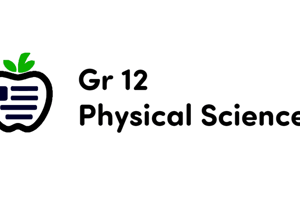Podcast
Questions and Answers
What does the law of conservation of matter state about substances in a closed system?
What does the law of conservation of matter state about substances in a closed system?
- Only chemical reactions affect the total mass.
- Atoms can be created or destroyed in reactions.
- Mass can increase during a chemical reaction.
- The total mass remains the same, regardless of changes. (correct)
Which of the following statements accurately describes products in a chemical reaction?
Which of the following statements accurately describes products in a chemical reaction?
- They have different properties than the original reactants. (correct)
- They have the same properties as the reactants.
- They only exist in liquid form.
- They are always gases regardless of reactants.
In chemical formulas, what do the subscripts indicate?
In chemical formulas, what do the subscripts indicate?
- The temperature at which the substance reacts.
- The ratio of different compounds in a mixture.
- The relative number of each type of atom in a molecule. (correct)
- The total number of atoms in the compound.
What type of bonds form between atoms to achieve stability?
What type of bonds form between atoms to achieve stability?
Which separation technique is best for separating a solid from a liquid?
Which separation technique is best for separating a solid from a liquid?
What distinguishes a homogeneous mixture from a heterogeneous mixture?
What distinguishes a homogeneous mixture from a heterogeneous mixture?
Which of the following correctly classifies an element as a nonmetal?
Which of the following correctly classifies an element as a nonmetal?
What is the primary purpose of chromatography?
What is the primary purpose of chromatography?
Which technique is used to separate components based on density?
Which technique is used to separate components based on density?
What is the difference between 'formula units' and 'molecules'?
What is the difference between 'formula units' and 'molecules'?
What happens to the total mass of substances in a closed system during chemical and physical processes?
What happens to the total mass of substances in a closed system during chemical and physical processes?
Which separation technique would be most effective for removing sand from water?
Which separation technique would be most effective for removing sand from water?
Which of the following best describes a heterogeneous mixture?
Which of the following best describes a heterogeneous mixture?
What is the primary characteristic of intramolecular bonds?
What is the primary characteristic of intramolecular bonds?
Which of the following accurately describes the products of a chemical reaction?
Which of the following accurately describes the products of a chemical reaction?
What does the term 'percent yield' refer to in a chemical procedure?
What does the term 'percent yield' refer to in a chemical procedure?
Which statement correctly distinguishes between pure substances and mixtures?
Which statement correctly distinguishes between pure substances and mixtures?
Which type of separation technique relies on the different boiling points of substances?
Which type of separation technique relies on the different boiling points of substances?
Which of these separation techniques is primarily used for separating pigments?
Which of these separation techniques is primarily used for separating pigments?
What defines the unique properties of a compound represented by a chemical formula?
What defines the unique properties of a compound represented by a chemical formula?
Flashcards
Law of Conservation of Mass
Law of Conservation of Mass
In a closed system, the total mass of matter remains constant during a chemical or physical change.
Chemical vs. physical properties
Chemical vs. physical properties
Chemical properties describe how a substance reacts with other substances, while physical properties describe characteristics without changing the substance's makeup.
Pure Substance vs. Mixture
Pure Substance vs. Mixture
Pure substances have a fixed composition, while mixtures have varying compositions.
Homogeneous Mixture
Homogeneous Mixture
Signup and view all the flashcards
Heterogeneous Mixture
Heterogeneous Mixture
Signup and view all the flashcards
Chemical Formula
Chemical Formula
Signup and view all the flashcards
Subscripts in formulas
Subscripts in formulas
Signup and view all the flashcards
Separation Techniques
Separation Techniques
Signup and view all the flashcards
Decantation
Decantation
Signup and view all the flashcards
Filtration
Filtration
Signup and view all the flashcards
What is the law of conservation of mass?
What is the law of conservation of mass?
Signup and view all the flashcards
How are intramolecular bonds formed?
How are intramolecular bonds formed?
Signup and view all the flashcards
What makes a compound distinct?
What makes a compound distinct?
Signup and view all the flashcards
Metals, Metalloids, and Nonmetals
Metals, Metalloids, and Nonmetals
Signup and view all the flashcards
Percent Yield
Percent Yield
Signup and view all the flashcards
Percent Error
Percent Error
Signup and view all the flashcards
Types of mixtures
Types of mixtures
Signup and view all the flashcards
How do we separate substances in a mixture?
How do we separate substances in a mixture?
Signup and view all the flashcards
Describe the difference between chemical and physical properties.
Describe the difference between chemical and physical properties.
Signup and view all the flashcards
What are the main differences between pure substances and mixtures?
What are the main differences between pure substances and mixtures?
Signup and view all the flashcards
Study Notes
Matter, Measurement, and Experimental Analysis
- Matter is conserved in chemical and physical processes. The law of conservation of matter states that total mass remains the same, regardless of changes within a closed system.
- Chemical reactions result in products with different properties compared to the original reactants.
- Chemical formulas represent compounds, where subscripts indicate relative numbers of atoms in a molecule or formula unit.
- Atoms are held together by electromagnetic forces.
- Intramolecular bonds form between atoms to attain stability.
- Covalent bonds involve electron sharing between nonmetals.
- Ionic bonds involve electron transfer between metals and nonmetals.
- Physical properties describe observable characteristics without changing composition.
- Chemical properties describe the ability of a substance to react and form new substances.
Essential Knowledge and Skills
- Distinguish between chemical and physical properties.
- Differentiate pure substances from mixtures (homogeneous/heterogeneous).
- Classify elements as metals, metalloids, or nonmetals.
- Name chemical formulas for binary covalent and ionic compounds.
- Relate compound types to the use of "formula units" and "molecules".
- Calculate percent yield and percent error for a given process.
- Explain various separation techniques like chromatography, filtration, decantation, magnetic separation, evaporation, and centrifugation.
Studying That Suits You
Use AI to generate personalized quizzes and flashcards to suit your learning preferences.




